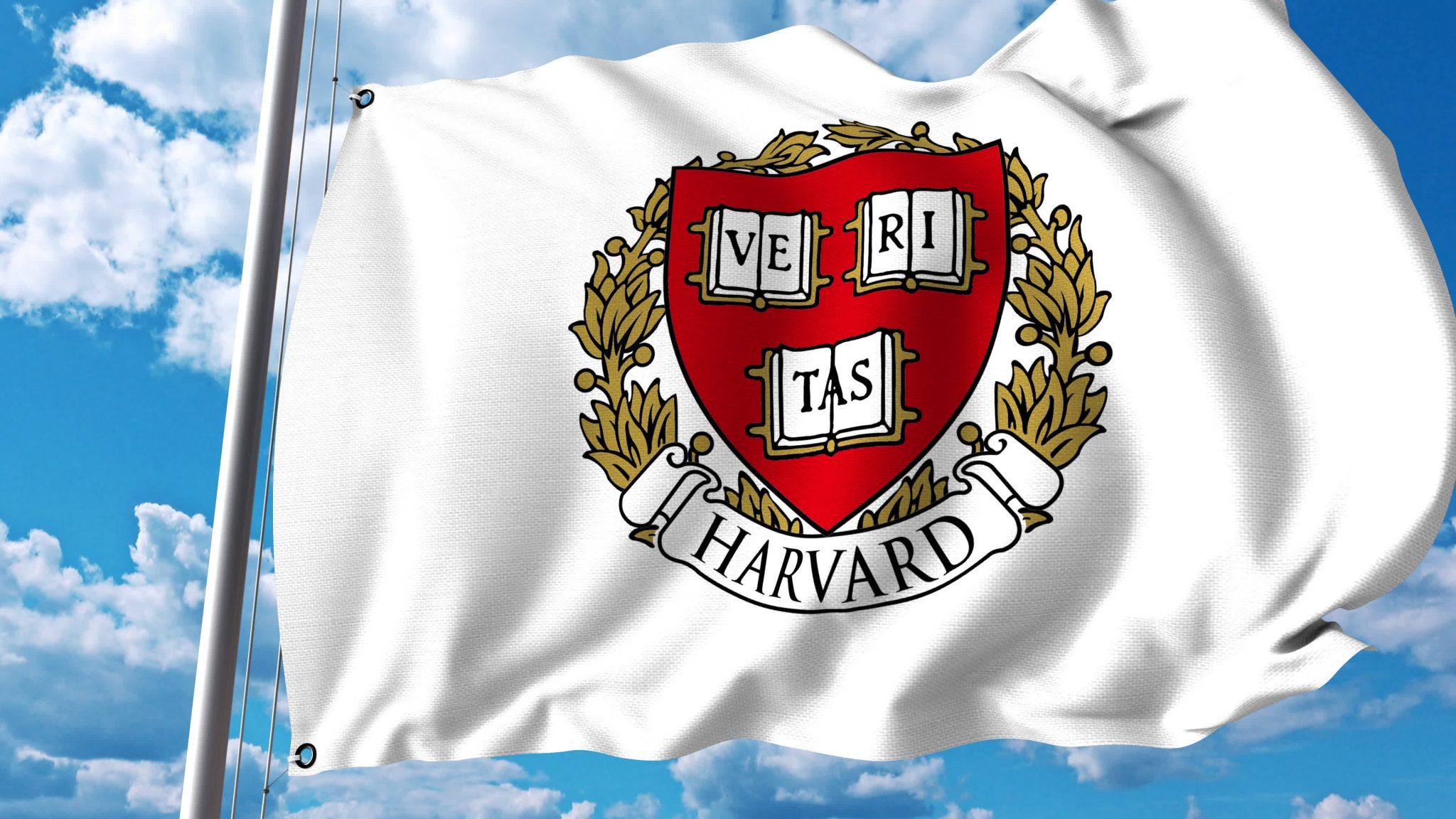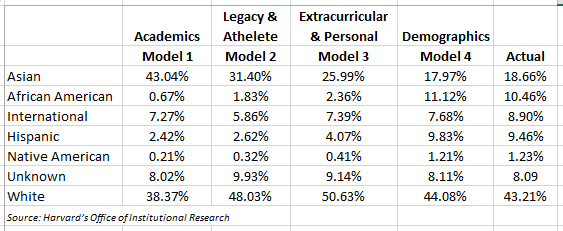
The hearing last week in the case of Students For Fair Admissions v. Harvard College, presumably the last until the judge offers her opinion, witnessed the unfortunate prominence of both a red herring and a red flag.
The Boston Globe captured both the red herring and a red flag in its lede: “US District Judge Allison Burroughs appeared skeptical Wednesday that plaintiffs had offered enough proof that Harvard College intentionally discriminated against Asian-American applicants, given that no rejected students testified during a three-week trial.”
Red Herring
The in-person absence of rejected Asian-American student applicants is a red herring because their appearance would have added nothing to the damning statistical evidence offered by the plaintiffs. That is true because, among other reasons, their individual cases were, in fact, present in abundance.
[Can A University Be Found Liable For Telling The Truth About Racial Preference?]
One example, from the plaintiff’s expert report by Duke economist Peter Arcidiacono:
With regard to academics, this applicant was at the very top: perfect scores on the SAT, perfect scores on three SAT subject tests, nine AP exams taken, scoring 5’s on all of them, and number one in his class out of 592. The scoring of the first reader was … a 1 on the overall rating. A 1 on the overall rating of the final reader is essentially a guarantee of admission. The alumni interview also went extremely well, and the applicant received a 1 both on the personal rating and overall rating.
The praise of the first reader is effusive:
X’s profile is the proverbial picket fence, right down the alum IV which predicts “a great impact” on campus. He’s had that and more on everything he’s touched so far. The list of research and awards is impressive. Someone we’ll fight over w/ Princeton I’d guess.
Princeton, or someplace, won since Applicant X “was ultimately rejected.”
There are thousands of rejected applicants just like X, and the personal testimony of several of them in court would have added nothing to this evidence. They would have no way of knowing why they were rejected. If Judge Burroughs doesn’t believe the statistically demonstrated pattern of downgrading Asian applicants, she would not believe an example or two who appeared in person.
[Debating the Lawsuit Against Harvard]
The eight current Asian and other Harvard students and alumni (“all non-white”) who did testify were similarly unnecessary, or worse — such as when Harvard senior Thang Q.Diep testified that he “personally benefited from affirmative action” because it allowed “my immigration history to be taken into account.” Race-blind admissions, sought by the plaintiffs, would of course still allow a candidate’s immigration history and other unique “experiences” to be taken into account.
Red Flag
In addition to the indication that she might assign unjustified weight to the red herring of the missing rejected applicant witnesses, Judge Burroughs unintentionally raised a red flag concerning both the nature of the discrimination that the plaintiffs have a burden to prove and the standard she will apply to determine if that burden has been met. The red flag warning is that she might be susceptible to defining “intentionally discriminated” too narrowly.
She was entirely correct, however, to observe, as the Boston Globe noted, that Harvard also has “a problem,” based on “the statistical analysis that showed Harvard gave Asian-American applicants lower personal scores.” That was an understatement since the evidence that Harvard’s own staff assigns lower personal scores to Asian applicants is both overwhelming and damning.
[Harvard’s Strip Tease About Wealth and Race]
As Minding the Campus reported last June, Harvard’s defense of its personal and overall scoring “means Asian Americans have, among other things, a less ‘positive personality,’ ‘others like to be around’ them less, they have worse ‘character traits’ such as ‘likability … helpfulness, courage, [and] kindness,’ they are not ‘attractive [people] to be with,’ they are not ‘widely respected,’ and they have worse “human qualities.” [Summary Judgment Memo, 28]
Peter Arcidiacono, the Duke economist and plaintiffs’ expert, pointed out in his rebuttal report that these low scores are especially damning because they are assigned subjectively by Harvard’s own admissions staff, a result that contrasted markedly “from the scores Asian-American applicants receive from other individuals, including the ratings from alumni interviewers, teachers, and counselors.” Importantly, Arcidiacono noted regarding the personal scores assigned by the admissions staff, “Asian-American applicants are assigned the lowest scores of any racial group.”
“‘The most important question in the case is, Why is this happening?’ said Adam K. Mortara, a lawyer for Students for Fair Admissions,” the Chronicle of Higher Education wrote in its summary of last Wednesday’s hearing. “He proposed two possible answers,” the Chronicle continued. “Either Asian-American applicants ‘actually deserve’ lower ratings, he said, or Harvard’s admissions officers ‘may quite well have fallen prey to racial stereotyping.’ In short, he suggested that admissions officers had expressed an unconscious bias: ‘It doesn’t make them evil, it makes them human.’”
In fact, there are more than “two possible answers,” and unfortunately Mortara apparently neglected to mention by far the most likely one, one that in fact was explicitly emphasized in the plaintiff’s various pleadings and expert reports. As stated in its complaint, for example, Harvard awards massive preferences to black and Hispanic applicants and penalties to Asians. Thus its “remarkably stable admissions and enrollment figures over time are the deliberate results of systemwide intentional racial discrimination designed to achieve a predetermined racial balance of its student body.” [Emphasis added]
[Ending Anti-Asian Discrimination at Harvard: Plan B]
In his report on the recent hearing for Inside Higher Ed, Scott Jaschik (whose bias I have documented here) wrote that “Others fear that the arguments made by the plaintiffs — many of which rely on comparisons of average test scores and grades of various groups of students — have left the public more confused than ever about how top colleges admit students.” That’s wishful thinking since on the contrary, the formerly secret information that came out in the trial has been eye-opening.
In fact, Jaschik even includes one revealingly damning bit of that information, the following chart prepared by an internal Harvard study that is a perfect prequel to the data the plaintiff’s introduced:
The chart shows that if academics only were considered, Asians would make up 43% of admitted applicants, instead of their actual 18.6%. Blacks would be 0.67%, which would rise to 2.3% if legacy and athlete status were also considered, but would rise 11% once “demographics,” were added. “Demographics” is Harvard’s word for the benefit it awards (quite generously, as the chart show) based on race.
[Is Affirmative Action Near Its Expiration Date?]
Jaschik also quotes heavily, fawningly, from Princeton president Christopher Eisgruber’s comments about the Harvard case in his recent State of the University Letter, including his assertion that “The trade-offs in the admission process are complex and difficult, but this much is straightforward and singularly important: every single student on this campus is here because of merit.”
That is no doubt true, especially because he insists that “merit” (his quotes) is about more than “test scores, grades,” etc., but it is also largely irrelevant to the issue at the core of controversy over “diversity.” That issue is whether assigning massive benefits and burdens based on race is justified. The Harvard data revealed at trial demonstrates, as the chart above shows, that large numbers of Asians would have been admitted if they weren’t Asian, and large numbers of blacks and Hispanics would not have been admitted if they were not black and Hispanic. I doubt that President Eisgruber would say that is not also true at Princeton.
Why Does Harvard Discriminate? To Produce Racial Balance
Harvard’s discrimination is clearly intentional. One does not have to be a conspiracy theorist to observe that its stable racial mix from year to year is no accident, that it is a product of purposeful design. Admissions officers downgraded Asians on their “personal” and “overall” scores because they could. Those scores were subjective, assigned by Harvard staff, unlike the other measures — grades, test scores, activities, etc., — that are objective and on which Asian applicants could not be scored lower.
But it is of crucial importance to note that Harvard’s discrimination need not be — and in all probability is not — based on bias, whether conscious or unconscious. On the contrary, it is the result of Harvard’s determination to admit more blacks and Hispanics than purely merit-based admission would produce, a desire that requires reducing the number of either whites or Asians. It chose Asians.
That, quite simply, is how “diversity” works. Diversity-justified discrimination is, as progressives usually insist in other contexts, systemic, structural, not a product of bad apples.
The danger of Mortara’s pointing to biased individuals as the culprit is that it could lead Judge Burroughs to give Harvard a pass because she couldn’t find any.

“The in-person absence of rejected Asian-American student applicants is a red herring because their appearance would have added nothing to the damning statistical evidence offered by the plaintiffs.”
It’s not even that as much as what would happen to any student applicant who appeared.
First, there is no equivalent to the “rape shield” laws — starting with discovery, Harvard’s counsel would do everything possible to show that the applicant wasn’t qualified, and probably a generally terrible person as well.
All of this would be widely distributed by the compliant media (e.g. IHE, CHE) which would also imply (if not explicitly state) the racist intent of opposing Affirmative Action, and hence how the applicant is also a racist bigot as well.
And then the radical left would track them down and destroy their lives. There’d be demands they be expelled from the colleges they currently are attending, and no reputable employer would dare consider hiring them lest having to answer to terrorist mobs (e.g. Antafa) for having done so. Hence testifying against Affirmative Action would be committing academic and career suicide — and don’t think that they wouldn’t be told this, as well.
The left is very good at blacklisting people, and college students are particularly vulnerable to it — and this is part of why colleges get away with the outrageous stuff they do. The victims chose to walk away so as to get on with their lives as best they can.
Hence — as this case is going to the US Supreme Court anyway — it might become quite interesting if the judge does rule for Harvard on the basis of the lack of applicant testimony because all of the backstory could be introduced as part of the appeal. I somehow think that Justices Thomas and Kavanaugh might understand….
And the left’s mob-based censorship is something that ought to concern free speech advocates across the political spectrum….